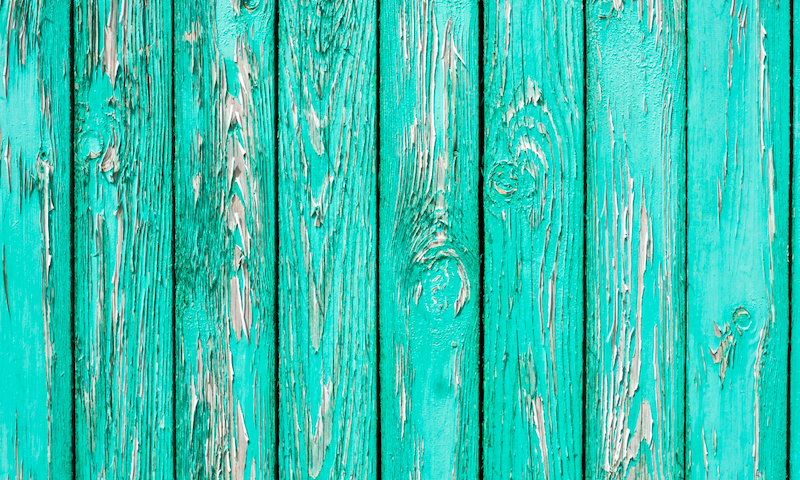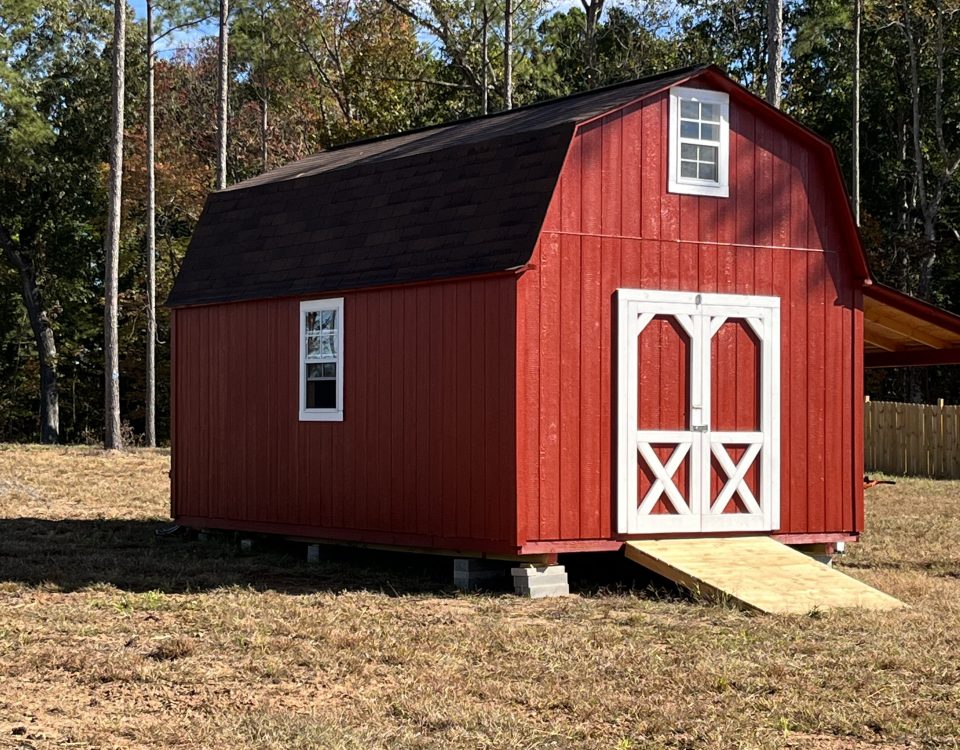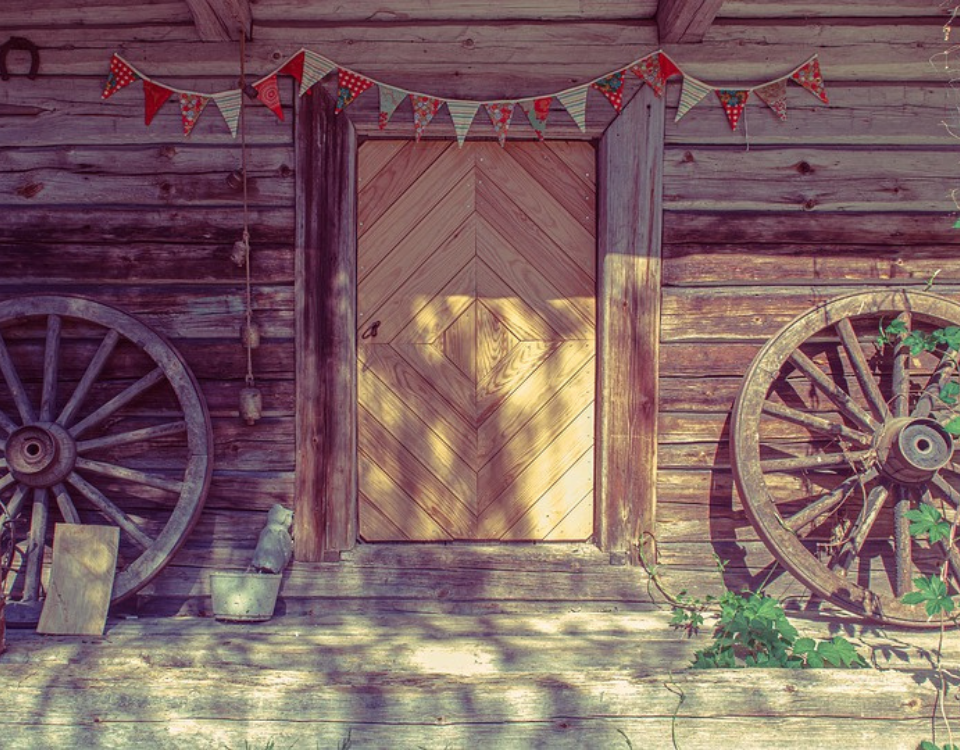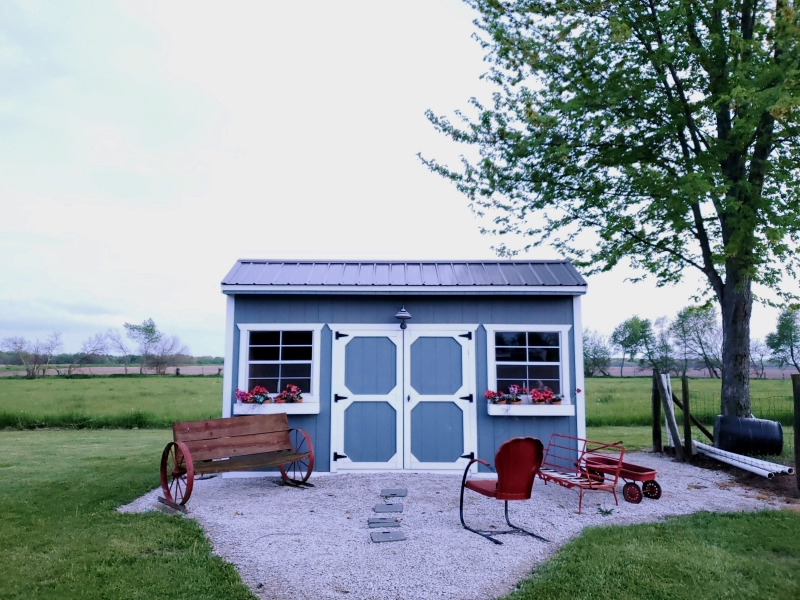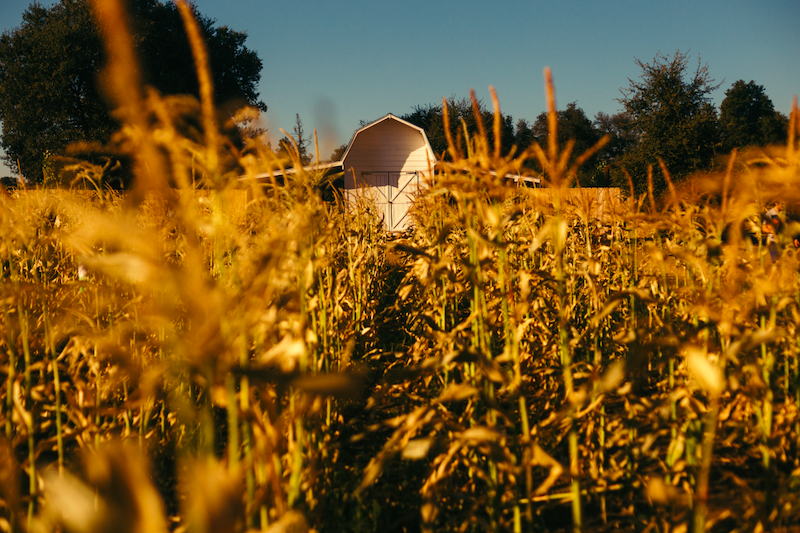
How Long Should A Wood Storage Shed Last?
June 22, 2019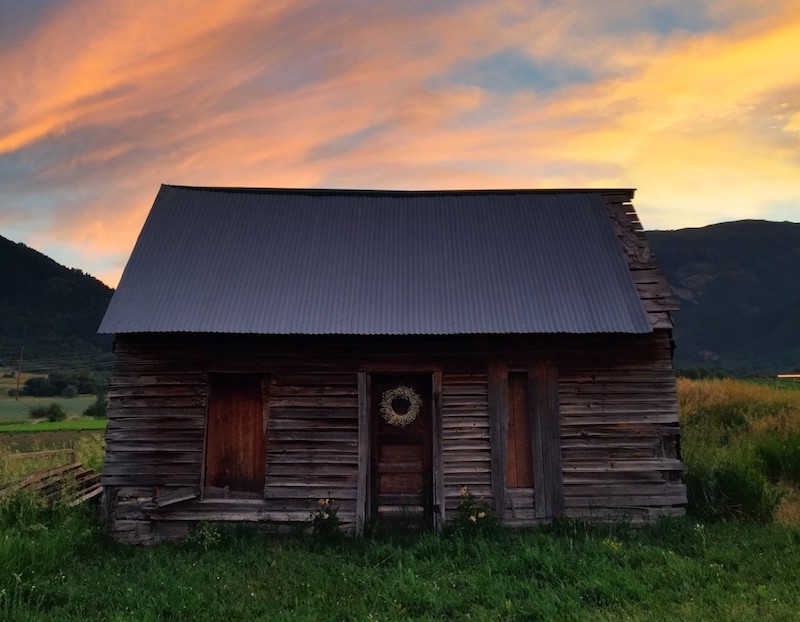
How Do Rent To Own Sheds Work And Are They Right For You?
August 29, 2019So you have an outside storage shed—congratulations! We happen to think everyone should invest in a high quality store shed. Outside storage sheds are beautiful, practical additions to every home. They offer extra storage space and are perfect for corralling your outdoor tools and gadgets.
Whether you’re new to shed ownership or you’re simply looking to up your game, here are 10 things that belong on your outside wooden storage shed care checklist. Thankfully, all of them are relatively easy and painless.
Outside Wooden Storage Shed Care Checklist
1. Look for problems.
Generally, it’s a good strategy not to go through life looking for problems. But when it comes to your outdoor shed, looking for problems is a good idea. Take a quick walk around the perimeter of your shed and check for cracks, leaks, breaks, or holes. If you don’t find anything of concern, great! If you find something amiss, fix it immediately. Most shed problems aren’t disastrous if you handle them right away.
2. Inspect the roof.
Especially if you’ve had a storm or other extreme weather recently, it’s a good idea to see what’s happening on the roof. Simple prop up a ladder and take a look. If branches or other debris have fallen on the roof, remove them right away as these can contribute to leaks. If any damage has been done to the shingles, take care of it immediately to avoid water damage. Especially during seasons of high precipitation, be sure to go out and check on your shed. Since we don’t live in our sheds, it’s easy to miss a problem if we don’t intentionally look.
3. Check the ceiling.
Open the doors and take a look inside your shed. The ceiling of your wood storage shed can sometimes be a helpful gauge regarding the roof. If you see any discoloration on the interior ceiling, it may indicate a leak in the roof. If there are any abnormalities or uneven spots, this may mean you need to go back and look at the roof. A smooth ceiling is a good sign.
4. Air it out.
A healthy outside storage shed is a well-ventilated storage shed. As often as possible, open the doors and air out the space. Especially on sunny days or days of good weather, make sure your shed is able to breathe. Being shut up all the time can create problems over time. Move things around and make sure everything is in good, working order. If you have cabinets or drawers in your shed, open them up and check on the contents.
5. Eliminate pests.
Pests like to hide where it’s comfortable, and an outside storage shed can be very comfortable—especially during cold seasons. So keep an eye out for spiders, ants, wasps, and rodents. They are more than a simple nuisance—they can contribute to deterioration, and ultimately they can damage the lifespan of your shed. Termites, especially, can seriously damage your wood storage shed. Also, if you have any other choice, don’t store your garbage cans inside your shed as this draws pests. If you see critters or creatures, remove them or hire someone to come and take care of the problem as soon as possible.
6. Inspect the perimeter.
Be aggressive about removing things that shouldn’t be touching the sides of your shed. Trim the grass, for example, and don’t stack firewood or mulch against your shed’s exterior. Not only do these items retain moisture, but they attract the pests you want to avoid. Don’t leave tools leaning against your exterior walls for a long period of time, either. Walk around your shed and remove anything that doesn’t need to be in contact with it. Keep windows and window sills clean as well.
7. Sweep it up.
Keeping the wood storage shed floor clean goes a long way in promoting the lifespan of your shed. Sweeping out unnecessary debris on the floor improves the health of your building and destroys the settling that can contribute to decay. A simple sweep is good for your shed and signals to any unwanted pests that they need to keep moving.
8. Search for water.
Unnecessary, long-term exposure to water or moisture can seriously damage your outside storage shed. Look for signs of water. Specifically check windowpanes, seals, corners, walls, floors, and doors. Any warping or discoloration should send up a huge red flag that something isn’t right. Look for puddles outside your shed that are too close for comfort. Standing water can harm your shed and create the need for big repairs. Be aggressive about any signs of water that you find.
9. Clean the exterior.
It’s a good rule of thumb to check with the builder who installed your storage shed to see how you should clean the exterior. That said, using soap and water (and some elbow grease!) typically does the trick. Look for stains and address them before they become permanent. Remove dirt or debris. Check for cobwebs and nests. Or use a power washer, but be sure to keep it on a low pressure setting to avoid long-term damage. The cleaner you keep your outside storage shed, the longer your shed will last.
10. Paint any spots.
If you notice any fading or chipping on your shed’s paint job, fix the spots as soon as possible. Be sure to use high-quality paint that is mildew resistant and covers easily. Paint is a relatively pain-free way to keep your outside storage shed in good order and preserve the lifespan. If you find that you must add paint more than every 5 years, look into what is causing the problem. A well-treated wood storage shed shouldn’t need to be re-painted more than every 8 years.
If you stay on top of this outside wooden storage shed care checklist, your shed should be in good condition for many years to come! The good news? You can print this list and pass it to a friend or family member any time who is willing to lend a hand. Just make sure they love your shed as much as you do!


